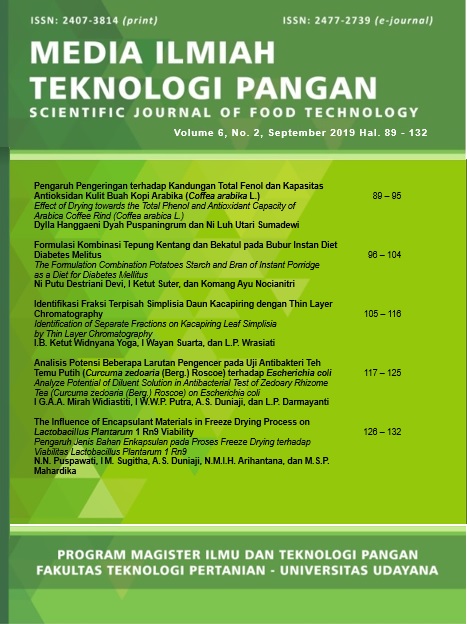Effect of Drying towards the Total Phenol and Antioxidant Capacity of Arabica Coffee Rind (Coffea arabica L.)
Abstract
The utilization of coffee processing waste in the form of rind and fruit flesh has the potential as a natural antioxidant. Coffee rind contains several secondary metabolite compounds, one of it was the polyphenol. Phenol compounds contains antioxidant, antitumor, antiviral, and antibiotic activities. Phenol compounds are known has a role in antioxidant activity. The greater the phenolic compounds so were the antioxidant activity. The drying process in the making of coffee rind have an impact on the phenol and the antioxidant capacity. The aim of the study was to determine the effect of the drying method (oven and sunlight) towards the total phenol and antioxidant capacity of Arabica coffee rind (Coffea arabica L.). Total phenol was determined by the Follin Chiocalteau Phenol method and antioxidant capacity by the DPPH method. The results of the analysis found that the highest total phenol in the green coffee rind dried by sunlight for 20 hours is equal to 1400,652 mg GAE/100g. Drying process by sunlight was able to maintain and produce high total phenols. The antioxidant capacity of green coffee rind (by sunlight) has the highest antioxidant capacity of 6,638.61 mg GAEAC/L.








